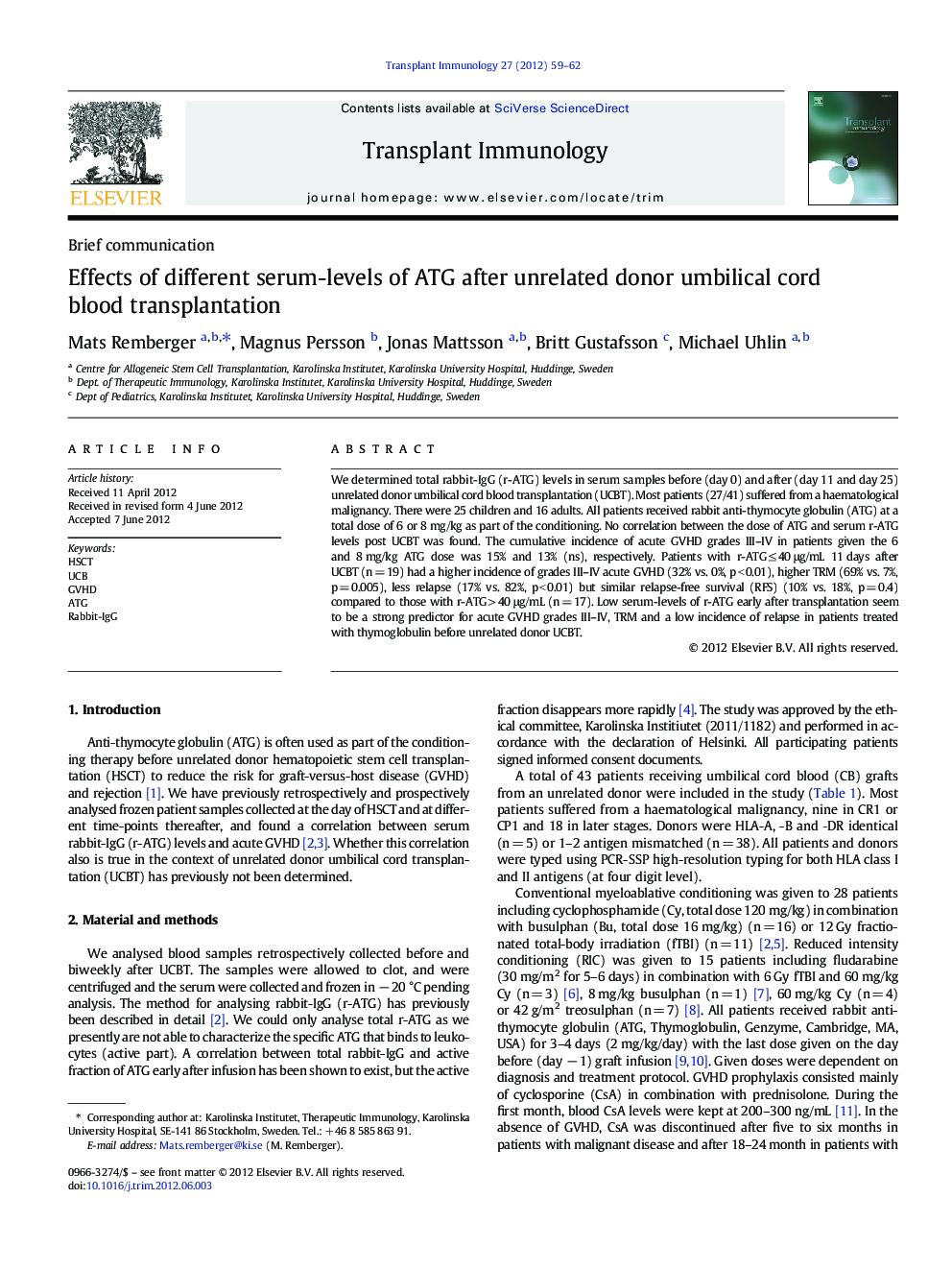| Article ID | Journal | Published Year | Pages | File Type |
|---|---|---|---|---|
| 3392150 | Transplant Immunology | 2012 | 4 Pages |
We determined total rabbit-IgG (r-ATG) levels in serum samples before (day 0) and after (day 11 and day 25) unrelated donor umbilical cord blood transplantation (UCBT). Most patients (27/41) suffered from a haematological malignancy. There were 25 children and 16 adults. All patients received rabbit anti-thymocyte globulin (ATG) at a total dose of 6 or 8 mg/kg as part of the conditioning. No correlation between the dose of ATG and serum r-ATG levels post UCBT was found. The cumulative incidence of acute GVHD grades III–IV in patients given the 6 and 8 mg/kg ATG dose was 15% and 13% (ns), respectively. Patients with r-ATG ≤ 40 μg/mL 11 days after UCBT (n = 19) had a higher incidence of grades III–IV acute GVHD (32% vs. 0%, p < 0.01), higher TRM (69% vs. 7%, p = 0.005), less relapse (17% vs. 82%, p < 0.01) but similar relapse-free survival (RFS) (10% vs. 18%, p = 0.4) compared to those with r-ATG > 40 μg/mL (n = 17). Low serum-levels of r-ATG early after transplantation seem to be a strong predictor for acute GVHD grades III–IV, TRM and a low incidence of relapse in patients treated with thymoglobulin before unrelated donor UCBT.
►WE determined total rabbit-ATG levels in serum samples before and after URD UCBT. ► All patients received rabbit anti-thymocyte globuline (ATG), 6 or 8 mg/kg. ► Patients with r-ATG ≤40 µg/mL 11 days after UCBT had more acute GVHD III-IV. ► Patients with r-IgG ≤40 µg/mL had higher TRM (69% vs. 7%, p=0.005). ► Patients with r-IgG ≤40 µg/mL had less relapse (17% vs. 82%, p<0.01).
